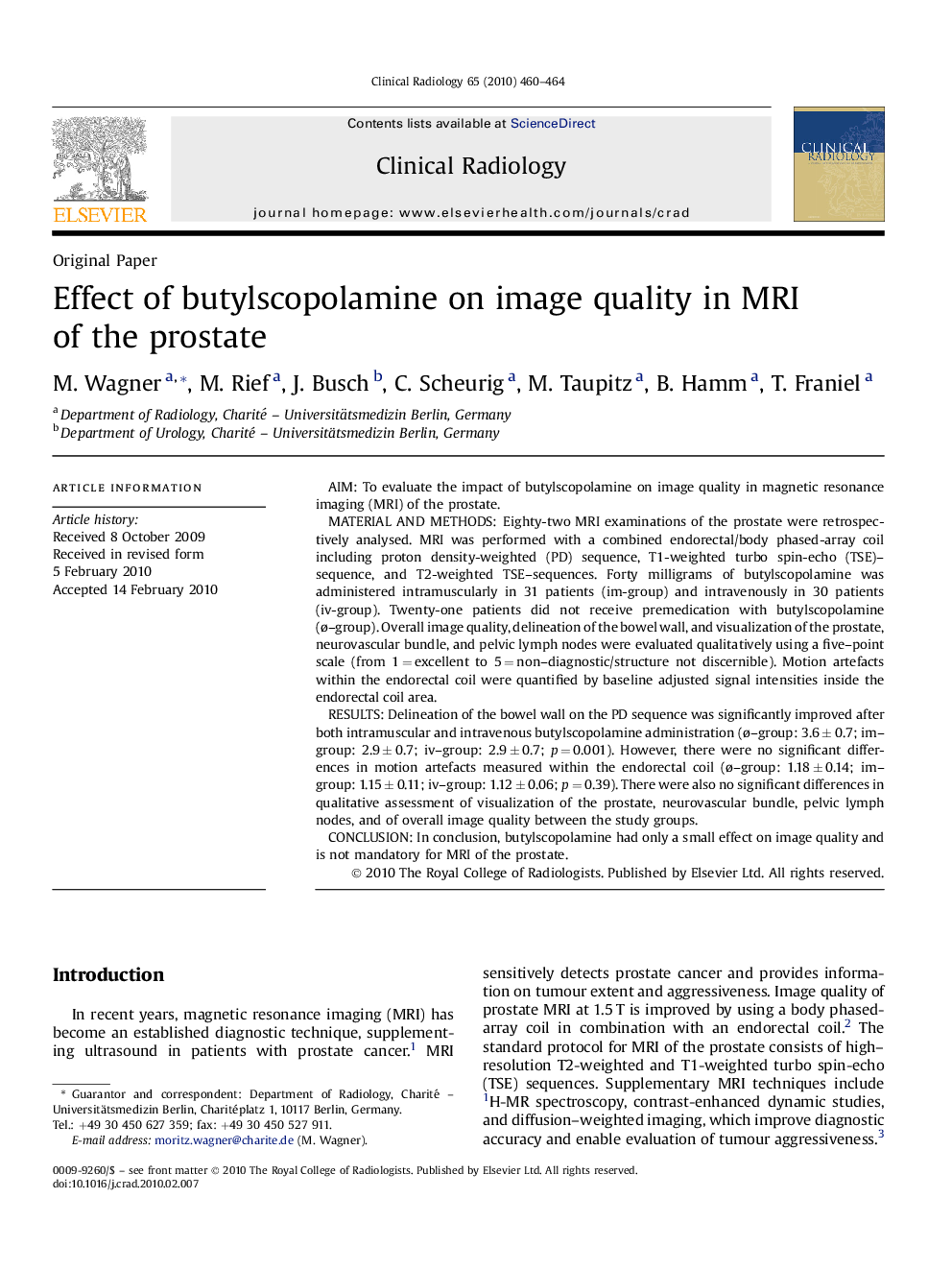| Article ID | Journal | Published Year | Pages | File Type |
|---|---|---|---|---|
| 3983078 | Clinical Radiology | 2010 | 5 Pages |
AimTo evaluate the impact of butylscopolamine on image quality in magnetic resonance imaging (MRI) of the prostate.Material and methodsEighty-two MRI examinations of the prostate were retrospectively analysed. MRI was performed with a combined endorectal/body phased-array coil including proton density-weighted (PD) sequence, T1-weighted turbo spin-echo (TSE)–sequence, and T2-weighted TSE–sequences. Forty milligrams of butylscopolamine was administered intramuscularly in 31 patients (im-group) and intravenously in 30 patients (iv-group). Twenty-one patients did not receive premedication with butylscopolamine (ø–group). Overall image quality, delineation of the bowel wall, and visualization of the prostate, neurovascular bundle, and pelvic lymph nodes were evaluated qualitatively using a five–point scale (from 1 = excellent to 5 = non–diagnostic/structure not discernible). Motion artefacts within the endorectal coil were quantified by baseline adjusted signal intensities inside the endorectal coil area.ResultsDelineation of the bowel wall on the PD sequence was significantly improved after both intramuscular and intravenous butylscopolamine administration (ø–group: 3.6 ± 0.7; im–group: 2.9 ± 0.7; iv–group: 2.9 ± 0.7; p = 0.001). However, there were no significant differences in motion artefacts measured within the endorectal coil (ø–group: 1.18 ± 0.14; im–group: 1.15 ± 0.11; iv–group: 1.12 ± 0.06; p = 0.39). There were also no significant differences in qualitative assessment of visualization of the prostate, neurovascular bundle, pelvic lymph nodes, and of overall image quality between the study groups.ConclusionIn conclusion, butylscopolamine had only a small effect on image quality and is not mandatory for MRI of the prostate.
